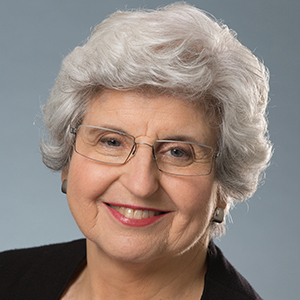Statement of Jocelyn Frye, President of the National Partnership for Women & Families WASHINGTON, D.C. – April 23, 2024 – Today, the Biden administration published a final rule to support higher pay and better work-family balance for workers by...

Last Year’s Supreme Court Term Was a Mockery of Justice. Here’s What’s at Stake in the Next Term.
A glimpse of what’s at stake in the upcoming Supreme Court term and a recap of the highlights (and lowlights) of last year’s term.

This Women’s History Month, We Witnessed History For Our Courts
This week, in the final days of Women’s History Month, Judge Ketanji Brown Jackson sat before the Senate Judiciary Committee as members considered her nomination to the Supreme Court. Judge Jackson, a long-term jurist and public servant, would be the first Black woman on the Court. Her nomination is part of an intergenerational struggle to ensure that our government decision-makers, including our judges, are representative of the people they serve and reflect the tapestry of lived experiences in our country.

Judge Ketanji Brown Jackson is eminently qualified, and the Senate needs to confirm her quickly and fairly.
Judge Jackson would be the first Black woman to serve on the Supreme Court and the second woman of color. She’s eminently qualified. Her voice and ability to bring her unique lived experience into her opinions will be key to upholding equal justice principles and pushing back on unfairness in the Court’s decisions.

A Shameful Day In Our Nation’s History
By voting to confirm Judge Brett Kavanaugh, U.S. Senators turned their backs on America’s women.

Gotcha? Hardly!
That is what’s at stake here: our lives. Our right to abortion care and ability to access it is about our health, the well-being and future of our families, our autonomy and our dignity. Ultimately it is about our ability to be equal.

Fasten Your Seatbelt. This Is Going to Be the Fight of Our Lives
Sometimes the world changes in a moment. One of those moments came when Justice Anthony Kennedy announced his retirement.

Judge Neil Gorsuch’s Record on Women’s Legal Rights
Judge Gorsuch’s record on women’s legal rights shows that time and time again, his approach to the law favors employers, politicians, and other powerful entities, and hurts the individuals who rely on the law for protection.

Supreme Court Decision in King Lays Foundation for Stronger Health Care System
The U.S. Supreme Court’s 6-3 decision in King v. Burwell offered a strong reminder of the primary goal of the Affordable Care Act (ACA): to improve access to affordable health coverage and care.

When is a Supervisor Not a Supervisor?
In June, the US Supreme Court dealt a stunning blow to workers’ rights in Vance v. Ball State University, a case that could have a chilling impact on victims of harassment and America’s civil rights laws.

Victory for Equality!
Today, the U.S. Supreme Court delivered a historic victory for same-sex couples and our nation’s promise of equal protection under the law.

Same-Sex Couples Deserve Equal Protection Under the Law
Today, the U.S. Supreme Court will hear oral arguments in the first of two cases that could significantly affect same-sex couples in this country.

Supreme Court to Take Up Supervisor Harassment Case
Later this term, the Supreme Court will decide the case of Vance v. Ball State, a case that will have critical implications for the ability of our nation’s civil rights laws to root out unlawful workplace harassment.

Supreme Court Erodes State Workers’ FMLA Rights
By a narrow majority, the U.S. Supreme Court’s decision in Coleman v. Maryland Court of Appeals has eroded the right of millions of state workers to take job-protected leave under the Family and Medical Leave Act of 1993 (FMLA) when faced with a serious illness, injury, or pregnancy.

Defending Progress on Health Care
In March, the United States Supreme Court will hear a challenge to the Affordable Care Act (ACA) – the health reform law enacted in 2010.

Supreme Court to Decide State Workers’ Rights Under FMLA
The U.S. Supreme Court is hearing oral argument today in Coleman v. Maryland Court of Appeals – a case that could erode the right of millions of state workers to take job-protected, unpaid leave under the Family and Medical Leave Act (FMLA) when faced with a serious illness.

Shameful: Partisan Politics Block Another Highly Qualified Judicial Nominee
All year, we’ve seen partisan politics impede the progress America needs — from jobs to anti-discrimination measures to work and family advances to the safety net.

Remembering a Major Step toward Equality in the Courts
Thirty years ago today, women and girls in every corner of the country watched with pride as Sandra Day O’Connor raised her right hand, took an oath and became the first woman justice on the Supreme Court.

Wal-Mart v. Dukes: A Supreme Blow to Corporate Accountability, the Class Action Vehicle – and Justice
The Supreme Court’s decision in Wal-Mart v. Dukes was deeply disappointing for those who care whether workers can vindicate their statutory rights.

The Power of Three
It’s the first Monday in October, and the Supreme Court convenes today for a new term. But this term is different from all others because, today for the first time ever, three women are serving together on our highest court. It is significant — momentous — that one-third of the Court is female, even though that fraction does not yet represent our proportion of the population. But it is a sign of progress that was once almost unimaginable for me and most of my peers.

And Kagan Makes Three!
I am thrilled that the Senate has confirmed Elena Kagan to serve on the Supreme Court. This is an important milestone in our journey toward equal rights for women – and our nation will be stronger as a result.

